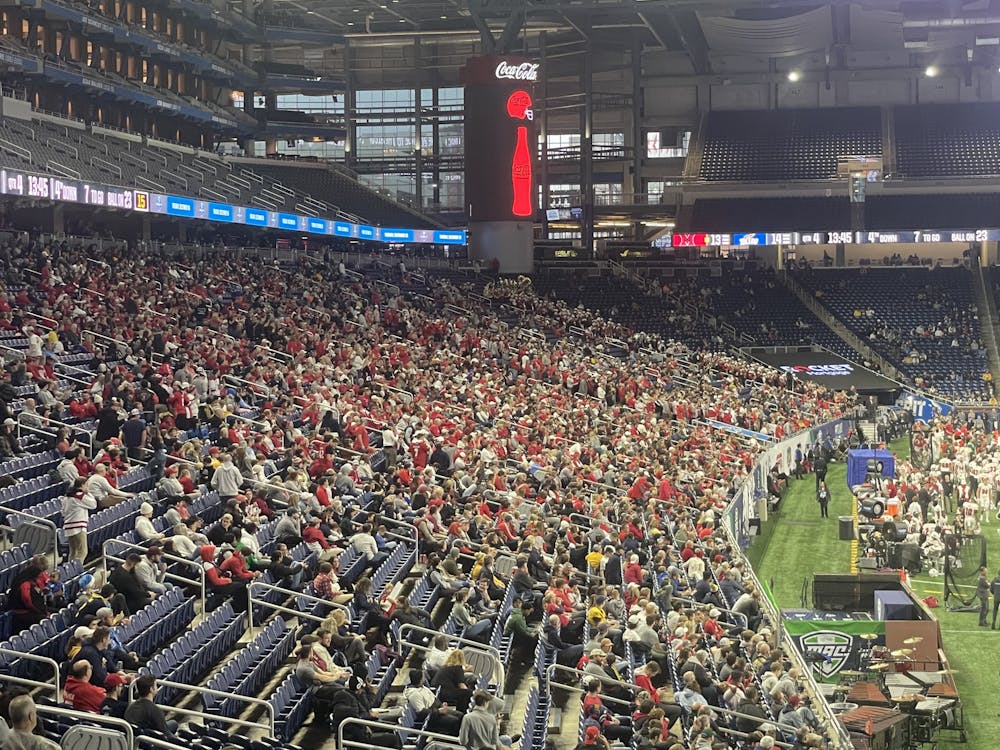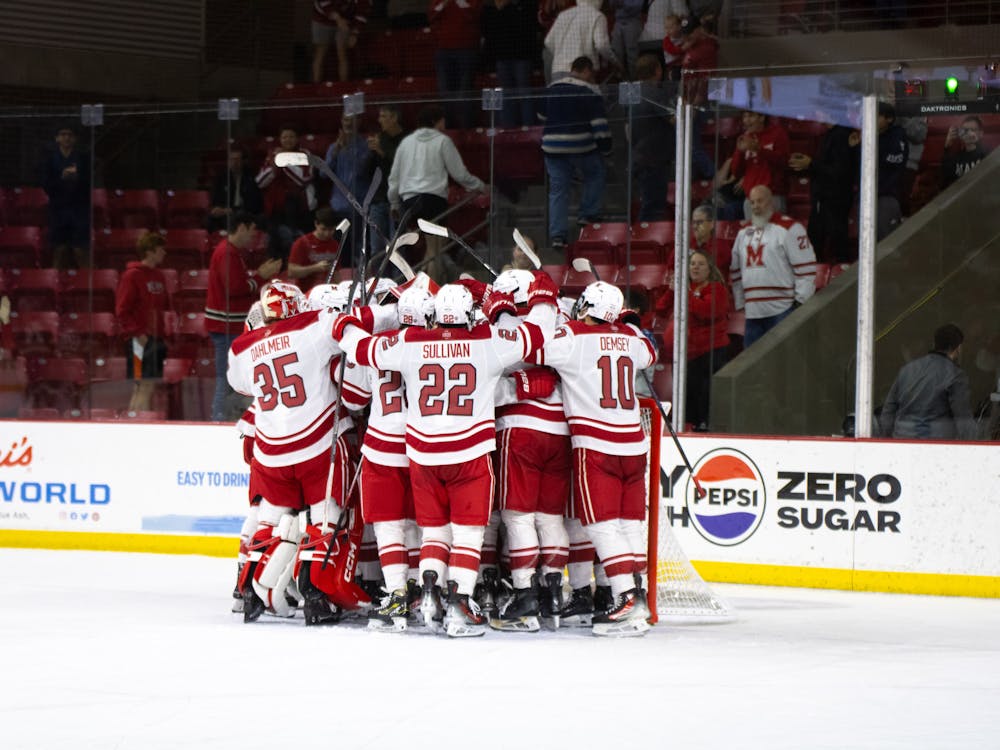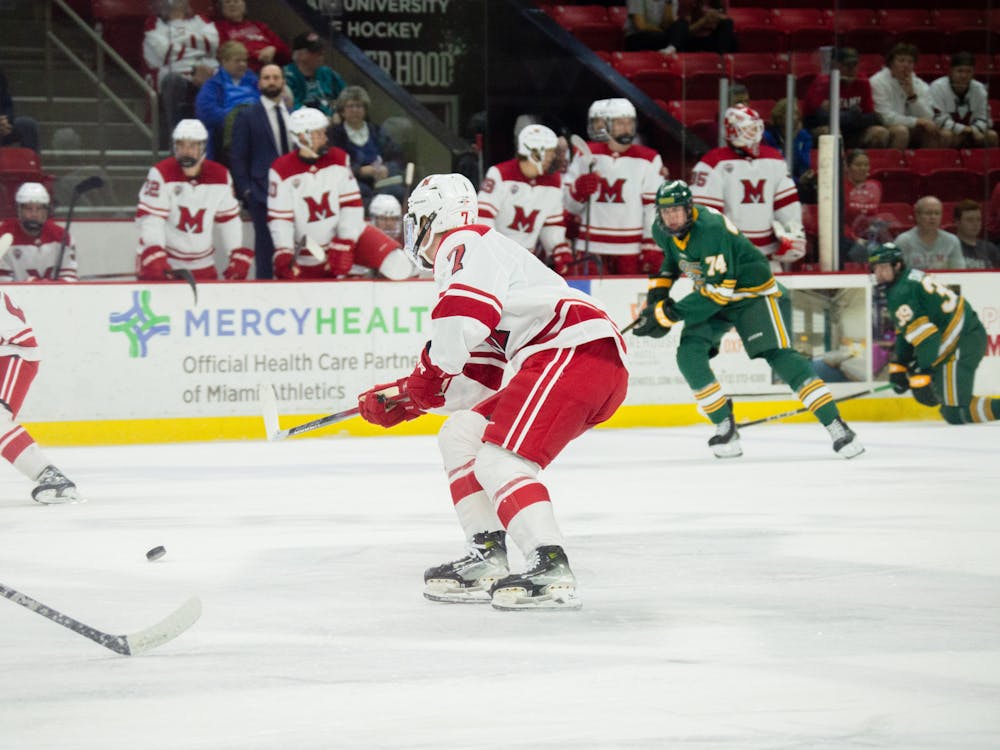When the Miami University men’s basketball team played Eastern Michigan University last year, around 800 students crowded the student section to watch the game. Most of them were there to see Eastern Michigan guard and social media star Emoni Bates, who was drafted in the second round of last year’s NBA Draft.
The basketball team averaged 1,847 attendants at home games in 2022. That number rose to more than 3,000 in the Eastern Michigan game. When Miami plays teams with notable players, the home-game attendance tends to increase significantly.
Steve Baker, who has been covering the RedHawks for 39 years on radio and streaming broadcasts, reflected on how the games were when some high profile players attended Miami:
“Back when [Ron] Harper was here, we had a section called the Bleacher Rats … and it was packed,” said Baker. “Certainly when Ben [Roethlisberger] was here, some of our best crowds ever in football. I think at this level, it takes that kind of player or that kind of team to get that involvement.”
Despite some of the recent shortcomings, Miami has the ability to draw sizable crowds.
Having everyone moving in the same direction within the Athletic Department is crucial to the success of the student section. The commitment has to be made from everyone, starting from the top and moving down to the interns.
Another way to gain support for the athletes is connecting them more within the campus community. When people form a personal connection with the athletes, they will be more likely to support them at games. Ultimately, a student section starts with passionate students who want to have fun. Once a passionate group of students starts gaining momentum, then in-game production and other large scale projects can be addressed.
This idea of a passionate student section is notable at Xavier University, where Miami men’s basketball head coach Travis Steele coached previously.
“It just takes one idea to change something,” Steele said. “I think getting a couple students who are really passionate behind it … can change the trajectory of a program. Coaching staff across the board have to be invested in that as well.”
One of the small engagement techniques used at Xavier came from the coaching staff. The staff at Xavier created their own stat, which they labeled the “kill.” A kill is three defensive stops in a row. The staff got students involved by having them bark whenever the team had achieved two defensive stops in a row and was competing for a third. Steele has carried the tradition of the kill over to Miami.
Another area for improvement is with campus outreach and social media. While official team accounts provide important information, it is up to students to create excitement amongst themselves for the game. Lindsay Sparks, the chief athletic marketing and communications officer at Miami, said this includes student athletes getting information out about their games.
“It’s so different when someone says, ‘I’m in a [game] this weekend, will you come watch me?’ versus getting a social media post that says there’s a [game] on campus this weekend,’” Sparks said.
Enjoy what you're reading?
Signup for our newsletter
If team accounts create high quality content, they can grow their following and spread awareness. However, with a small athletic communications and marketing budget, Miami Athletics cannot afford to pay many full time staffers, much less most of the 50 student interns. This has led to high turnover among student interns, making it hard for continuity in high quality content.
Football is a noticeable exception because they have their own group of experienced videographers and graphic designers. According to Skull Sparks, this change resulted in a 121% increase in interactions from 2021 to 2022. The Miami Football Twitter account also saw the third highest increase in followers among FBS teams over the past year.
Despite this, not every team has the same success. According to Skull Sparks, as of 2022, Miami is outside of the top 150 universities in social media interactions for men’s basketball.
The university has the brand to be able to work its way into the top 150, but few people are seeing the content on the men’s basketball pages and interacting with it. Being able to boost interactions will let more people know when games are or how the team is doing. This may not necessarily correlate to having more students at games, but they will at least know there is an event going on.
Miami’s attendance issues cannot be solved immediately, but the university can create a turning point in the athletics culture.




